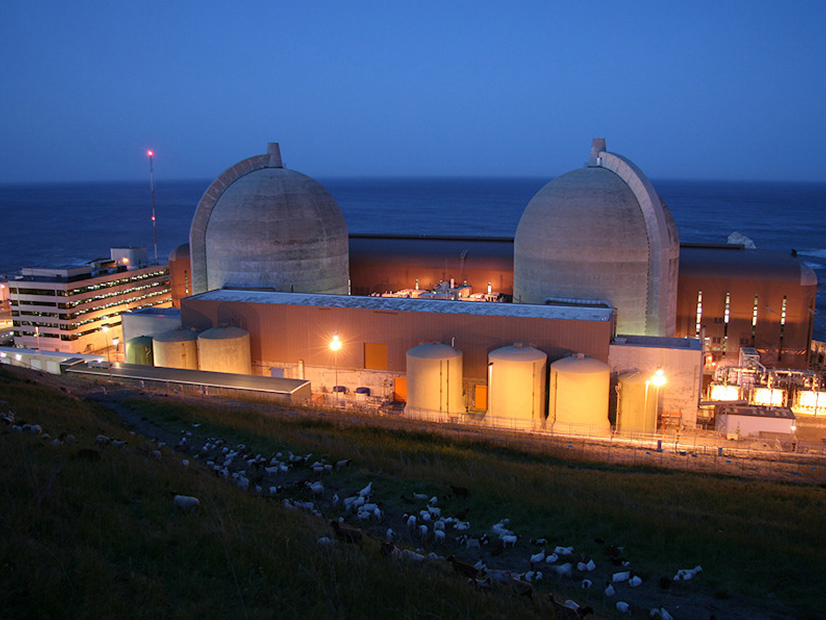The Nuclear Regulatory Commission on Thursday approved Pacific Gas & Electric’s (NYSE:PCG) request to keep Diablo Canyon Power Plant’s two reactors running past their license expirations in 2024 and 2025 to address reliability concerns.
NRC regulations require that owners of nuclear plants file applications to extend their licenses five years before expiration. But citing the “public interest,” the NRC granted PG&E an exemption allowing it to continue operating the reactors beyond their license expirations as long as it files new extension requests by the end of this year. The agency will continue its regular inspections of the facility while the extension is in place.
Diablo Canyon, the state’s last nuclear generator, produces 2,300 MW of power — the largest source of emissions-free power in California.
The utility had started the renewal process in 2009, but withdrew its application, based partly on the state officials’ determination that the plant would not be needed to meet future demand for electricity. The California Public Utilities Commission approved its decision to retire the power plant in 2018.
PG&E sought to reopen that process after a law passed last year reversed the PUC’s decision, but NRC denied the request in January, saying PG&E must open a new license renewal case. (See PG&E Must Seek New Diablo Canyon License.)
“We are pleased the NRC approved our exemption request,” PG&E Senior Vice President and Chief Nuclear Officer Paula Gerfen said Thursday. “Aligned with Senate Bill 846, PG&E will continue on the path to extend our operations beyond 2025 to improve statewide electric system reliability and reduce greenhouse gas emissions as additional renewable energy and carbon-free resources come online.”
In August 2020, California saw its first rolling blackouts since the energy crisis of 2000-1, as demand spiked during extreme temperatures. It came close to losing power late last summer in another heat wave.
The state has lost other resources — mainly natural gas plants — because of its restrictions on once-through cooling, a technique also used by Diablo Canyon. Once-through cooling draws water from the ocean to cool the steam used to turn the plant’s turbines, which is then discharged back into the sea — raising temperatures enough to damage the local environment.
The California Energy Commission earlier this week unanimously voted to approve a report finding Diablo Canyon would be needed until 2030. If granted, the NRC’s license extensions would give the plant another 20 years of operations.
The California PUC has approved procurements of 22,241 MW of new capacity through 2028, largely solar and batteries, which the CEC found would be enough to meet the minimum reliability standards for the rest of the decade.
“However, there are uncertainties both in the ability of California [load-serving entities] procuring sufficient resources to meet the current ordered procurement and the determination that procurement would be sufficient to ensure reliability in extreme events,” the CEC’s report said.
For the state to stay on schedule, the PUC’s procurements would need to be rolled out at a pace never seen before. That might be possible, but the industry is also contending with supply chain risks and could see projects delayed in the permitting process, the CEC said.
The potential delays add to concerns over the extreme weather that California has seen increasingly in recent years.
The CEC said the state might not have sufficient capacity to maintain reliability in a coincident event, “such as a West-wide heat event resulting in unprecedented load and greater competition throughout the West for available resources, extreme drought impacting hydroelectric output, and one or more wildfires impacting transmission. …
“These dynamics are not just impacting California,” the CEC added. “The Western states as a whole are seeing tighter availability of resources, causing increased competition for existing resources, as well as related costs, making resources such as imports harder to come by. Given California’s historical dependency on imports to meet resource adequacy, the dynamics of the Western states’ resource adequacy market issues pose additional risk to maintaining reliability.”




